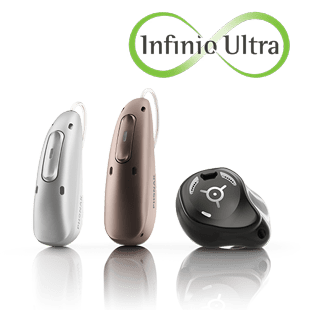
COSI™ 2.0: An AI-driven makeover for a classic tool
This new version of COSI™ is an AI-powered tool that guides patients to define meaningful goals before their appointment, making it easier for hearing care professionals to understand their patients’ top listening needs and for patients to recognize the benefits over time.
“I just want to enjoy watching TV with my family again”
That’s a real patient need and the kind of thing I’ve heard many times in clinic. It’s also why I’ve always loved the Client Oriented Scale of Improvement (COSI™). From the start, it anchored hearing rehabilitation to what truly matters to our patients.

Figure 1: The original Client Oriented Scale of Improvement (COSI).
Using the COSI, clinicians can translate these hearing needs into personalized patient goals. What better way to measure outcomes than by encouraging patients to choose their most important listening situations and tracking their progress over time?
Research in audiology and rehabilitation consistently points to one thing: goal setting improves patient outcomes. It’s not just a nice-to-have, it’s best practice.
Why COSI needed an update
When the COSI was released in 1997, it was groundbreaking: a personalized, clinician-facilitated way to set and measure hearing goals. But audiology has changed.
We now have AI-driven hearing aids, remote fittings, self-fit devices, and patients who come in better informed and more engaged than ever before. Meanwhile, the COSI process has stayed largely the same.
Digging into the problem
The research team at NAL took a deep dive, reviewing over one million COSI goals, interviewing clinicians, observing real clinical sessions, and surveying 98 clinicians from 16 countries.
The verdict? COSI needed more structure, better client engagement, and stronger alignment with rehab best practice.
We identified four key gaps:
- Undefined patient role: Patients weren’t active participants in the discussion.
- Lack of defined process: No consistent way to help patients identify meaningful goals nor track their progress.
- Evolution in clinical service: Patients accessing hearing care in different care models need access to appropriate tools.
- Difficult conversations: Patients and clinicians need support to enhance the hearing needs discussion and agree on the best solutions to ensure a great outcome.
What Is COSI 2.0?
COSI 2.0 is an AI-powered, digitally enabled tool designed to make hearing goals patient-led, personalized, and measurable. It enables patients to reflect on their hearing challenges in their own time and formulates goals using natural language input.

Figure 2: Screenshots from a COSI 2.0 prototype.
How it works
- Needs assessment: Patients are guided through a natural conversation, with an AI agent, regarding their hearing challenges and associated feelings prior to their appointment.
- Goal generation: The tool analyses responses and generates structured, patient-specific goals.
- Clinician review: The summary is available for both patient and clinician to review together, leading to richer, more focused discussions without adding to appointment time.
- Outcomes tracking: After device fitting, the patient rates their progress towards their goals, and shares with their clinician, celebrating the wins and adjusting further care, as needed.
What happened when we tested it
In the lab, COSI 2.0 was trialled in a simulated clinic and remote care pathway:
- 93% of in‑person users and 79% of remote users reported that COSI 2.0 accurately captured their hearing needs.
- Ease‑of‑use was high, with 75 – 83% finding it intuitive and helpful. Many shared powerful feedback: “The tool helped me clarify how my hearing loss is affecting me.”
In real-world clinics across Australia, COSI 2.0 proved even more impactful:
- Trust was high – 86% of patients felt confident with the tool, and 96% of clinicians referenced it in notes.
- Audiologists reported greater confidence in their recommendations, leading to increased device fitting rates.
- Over two thirds of patients felt more prepared for appointments, allowing clinicians to focus on meaningful care, not paperwork.
One clinician told us: “Knowing what was important to her beforehand led the COSI discussion in the right direction so we could focus our time better.”
- 91% of patients said it captured their needs accurately.
- 83% found it easy to use.
- 69% felt more prepared for their appointment.
One patient told us: “It helped me clarify how my hearing loss is affecting me.”
A clinician said: “It made my recommendation land with more weight because the client understood their own goal.”
Why It matters for audiologists
COSI 2.0 supports evidence-based, patient-centred care without adding clinical burden. It helps:
- Deepen patient-clinician conversations.
- Set more actionable and measurable goals.
- Tailor recommendations with confidence.
- Provide meaningful follow-up to track progress and reinforce success.
What COSI 2.0 Is (and Isn’t)
COSI 2.0 isn’t a replacement for the human side of audiology – it’s a bridge to it.
It helps patients reflect on their experience and take a more active role in the hearing care. It helps us spend less time fishing for goals and more time acting on them. It’s structured enough to be efficient, but flexible enough to fit into different care models.
In a world where hearing care is becoming more hybrid, more self-directed, and more tech-enabled, we need tools that can meet patients where they are. COSI 2.0 does exactly that.
What’s next
We’re continuing to test and refine COSI 2.0, with plans to expand its reach. I’d love to hear from fellow clinicians: How could this fit into your workflow? What would make it even better?
If you’re curious about how COSI 2.0 could work in your practice, stay tuned, we’ll be sharing more soon.
Want more insights? Check out my presentation, Leveraging AI to Improve Patient Outcomes, in the Hearing Care of the Future: AI in Audiology – A Phonak Educational Series. Whether you’re just getting started or looking to stay ahead, this is your guide to the AI-powered future of audiology.
Access the webinars now.
